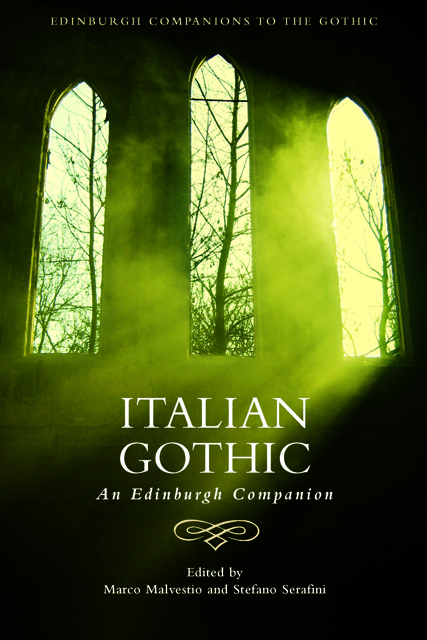1 - Gothic Beginnings: 1764–1827
Published online by Cambridge University Press: 20 October 2023
Summary
The relationship between Italian culture and the Gothic in the years 1764–1827 – the years of Horace Walpole and E. T. A. Hoffmann, of Ann Radcliffe and Mary Shelley – is a history of reciprocal misconstructions, determining the perception of an alleged Italian ‘delay’, generally stated by scholars without any substantial historical problematisation.
Eighteenth- and early nineteenth-century Italy is not a nation, but the laboratory of a nation, primarily defining its own identity by means of exclusion. Through a narrative formalised in the Renaissance by Giorgio Vasari, and reiterated by the eighteenth-century reaction against the Baroque, the Italian ‘mode’ in the arts (and by extension in literature) is localised in Italian culture's un-mediated continuity with Classical antiquity, expelling as other-than-self whatever does not fall within the organic cycle of sleep and rebirth of the ‘Classic’: primarily, the ‘maniera tedesca’ [German style] characterising the art of those centuries when the memory of antiquity seemed to be forgotten (Belting 73). It is immediately clear that, as a term derived from the architectural jargon, Horace Walpole's use of the adjective ‘Gothic’ perfectly matches Vasari's definition of ‘maniera tedesca’. From this viewpoint, the act of labelling The Castle of Otranto as a ‘Gothic’ novel does not only mean setting it in the ‘long period of barbarism, superstition, and anarchy dimly stretching from the fifth century […] to the Renaissance’ (Clery 21), but also proposing a deeply anti-Classicist image of Italy, directly challenging the primacy of Classicism as the dominant aesthetics of eighteenth-century Europe (Scianatico 16–22).
Hence the discrepancy between the image of Italy featuring in Gothic novels, from Walpole to Radcliffe and beyond – a ‘Meridionist’ (Pfister 3), Baroque and papist theatre of miracles (Pezzini) – and the actual country, where, in the absence of a unified nation and in a context of linguistic de-territorialisation, literate élites conceptualise Italianness as the un-mediated legacy of Classical tradition in the name of ‘reason’. Established as a keyword in Giovanni Vincenzo Gravina's influential treatise Della ragion poetica (1708), ‘ragione’ (‘reason’, but also ‘rationale’) is employed, throughout the long eighteenth century, as a remarkably open term, progressively constructed as the pivot of philosophical, conceptual, ideological and aesthetic normativity (Aloisi and Camilletti 3–4).
- Type
- Chapter
- Information
- Italian GothicAn Edinburgh Companion, pp. 19 - 29Publisher: Edinburgh University PressPrint publication year: 2023



